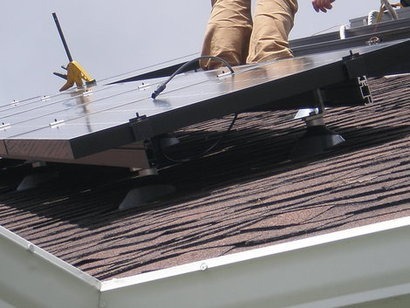
The Feed-in Tariff rate for solar PV in the UK has now changed to the lower rate of 4.39 per kilowatt hour introduced by the present Conservative government. It will be paid out from 8th February but householders can continue to invest in solar as normal in the interim, simply having to wait a few weeks before their payments commence.
The new rate is lower than that required by the solar sector in the UK, but it is a great improvement on the government’s original proposal, thanks to a campaign by the Solar Trade Association (STA), business throughout the UK and an unprecedented response by the public. The new rates will deliver a return on investment (ROI) of around 5 percent, tax free and linked to inflation and higher than any rates available from savings accounts, where interest rates are presently at a record low. A competitively priced solar installation is therefore likely to pay for itself over 13 years, and this could potentially improve with intelligent use of the system.
“Let’s be clear; solar is still a good investment for householders and an essential investment for the planet” said Paul Barwell, CEO of the Solar Trade Association. “Costs have come down so fast that solar is much more affordable today than five years ago – around half the price of a new car. There has never been a greater need to go solar because acting on climate change is more urgent than ever. Solar will save on your energy bills, and potentially add value to your home.”
Mr Barwell added that although the changes to the solar FiT are significant, solar technology is exceptionally reliable and attractive and the solar industry has proved itself to be the best energy sector in the world with regard to bringing down costs and developing innovative products. Solar power is also the UK’s most popular energy technology and, although it may be less financially attractive than previously, the STA remains on track to deliver a solar revolution that will benefit everybody in the UK.
The new rates will still be attractive to householders with available funds and an interest in low-carbon technology, the environment and home improvements. Canny householders can improve the payback time of their system by maximising the use of power output from the system, for example by using timer functions and running appliances during the day, and by investing in power diverters and even electricity storage.
Recent research by Barclays shows home buyers perceive solar as the most attractive technology when buying a new home, adding an estimated £2000 to the value of a home.
The STA is also urging anyone who needs to replace or repair their roof to include solar as the economics of going solar while you are re-roofing are particularly good. Roof replacement schemes are very attractive particularly as a new generation of roof-integrated solar panels can replace and blend with traditional slates and tiles.
Anyone installing solar should proceed as recommended by the Renewable Energy Consumer Code (RECC) and advice is freely available on their website. RECC requires installers to issue a workmanship warranty for each installation valid for a minimum of two years and for this to be insurance-backed, so consumers can continue to have confidence in their installations. To be entitled to Feed-in Tariff payments installers must be Microgeneration Certification Scheme (MCS) certified and members of RECC.
The STA has also published a simple Solar Repair Agreement which member companies of the STA and customers can sign if a repair or maintenance of another company’s installation is required.
For additional information:

